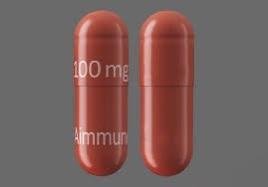Palforzia Disease Interactions
There are 3 disease interactions with Palforzia (peanut allergen powder).
Peanut allergen extract (applies to Palforzia) anaphylaxis
Major Potential Hazard, Moderate plausibility. Applicable conditions: Cardiovascular Disease, Pulmonary Impairment
Peanut allergen extract should not be initiated in a patient who has had severe or life-threatening anaphylaxis within the previous 60 days. This agent may not be suitable for patients with certain medical conditions that may reduce the ability to survive anaphylaxis, including but not limited to markedly compromised lung function, severe mast cell disorder, or cardiovascular disease. Exercise care in these patients.
Peanut allergen extract (applies to Palforzia) asthma
Major Potential Hazard, Moderate plausibility.
Peanut allergen extract is contraindicated in patients with uncontrolled asthma. Patients should have their asthma under control prior to initiation of therapy. It is recommended to temporarily withhold treatment in the event of an acute asthma exacerbation. Following resolution of the exacerbation, resumption should be undertaken cautiously. Re-evaluate patients who have recurrent asthma exacerbations and consider discontinuation of treatment. This agent has not been studied in subjects with severe asthma, persistently uncontrolled asthma, or patients on long-term systemic corticosteroid therapy.
Peanut allergen extract (applies to Palforzia) eosinophilic disorder
Major Potential Hazard, Moderate plausibility. Applicable conditions: Esophagitis
Peanut allergen extract is contraindicated in patients with history of eosinophilic esophagitis and other eosinophilic gastrointestinal disease.
Switch to professional interaction data
Palforzia drug interactions
There are 139 drug interactions with Palforzia (peanut allergen powder).
Palforzia alcohol/food interactions
There is 1 alcohol/food interaction with Palforzia (peanut allergen powder).
More about Palforzia (peanut allergen powder)
- Palforzia consumer information
- Check interactions
- Compare alternatives
- Drug images
- Side effects
- Dosage information
- During pregnancy
- FDA approval history
- Drug class: allergenics
- En español
Related treatment guides
Drug Interaction Classification
| Highly clinically significant. Avoid combinations; the risk of the interaction outweighs the benefit. | |
| Moderately clinically significant. Usually avoid combinations; use it only under special circumstances. | |
| Minimally clinically significant. Minimize risk; assess risk and consider an alternative drug, take steps to circumvent the interaction risk and/or institute a monitoring plan. | |
| No interaction information available. |
See also:
Further information
Always consult your healthcare provider to ensure the information displayed on this page applies to your personal circumstances.


